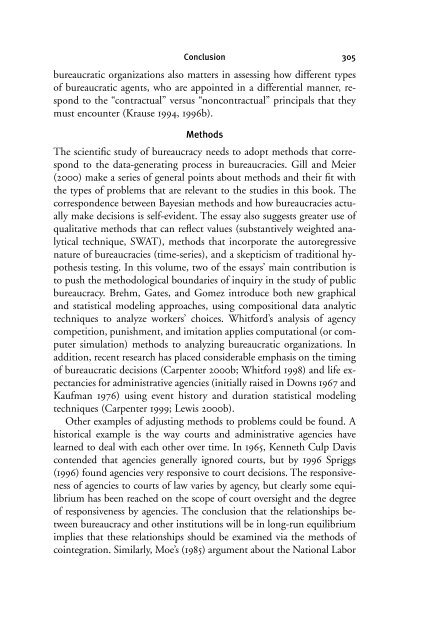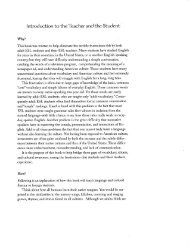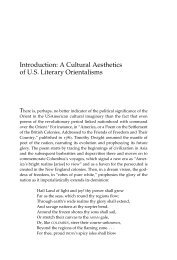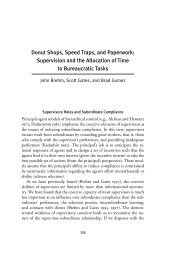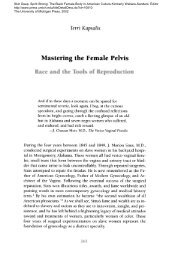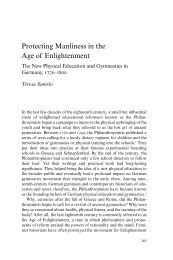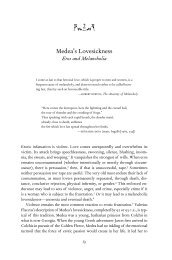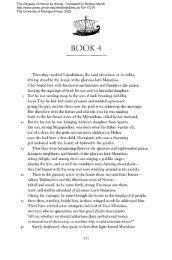Conclusion: An Agenda for the Scientific Study of Bureaucracy
Conclusion: An Agenda for the Scientific Study of Bureaucracy
Conclusion: An Agenda for the Scientific Study of Bureaucracy
You also want an ePaper? Increase the reach of your titles
YUMPU automatically turns print PDFs into web optimized ePapers that Google loves.
<strong>Conclusion</strong> 305<br />
bureaucratic organizations also matters in assessing how different types<br />
<strong>of</strong> bureaucratic agents, who are appointed in a differential manner, respond<br />
to <strong>the</strong> “contractual” versus “noncontractual” principals that <strong>the</strong>y<br />
must encounter (Krause 1994, 1996b).<br />
Methods<br />
The scientific study <strong>of</strong> bureaucracy needs to adopt methods that correspond<br />
to <strong>the</strong> data-generating process in bureaucracies. Gill and Meier<br />
(2000) make a series <strong>of</strong> general points about methods and <strong>the</strong>ir fit with<br />
<strong>the</strong> types <strong>of</strong> problems that are relevant to <strong>the</strong> studies in this book. The<br />
correspondence between Bayesian methods and how bureaucracies actually<br />
make decisions is self-evident. The essay also suggests greater use <strong>of</strong><br />
qualitative methods that can reflect values (substantively weighted analytical<br />
technique, SWAT), methods that incorporate <strong>the</strong> autoregressive<br />
nature <strong>of</strong> bureaucracies (time-series), and a skepticism <strong>of</strong> traditional hypo<strong>the</strong>sis<br />
testing. In this volume, two <strong>of</strong> <strong>the</strong> essays’ main contribution is<br />
to push <strong>the</strong> methodological boundaries <strong>of</strong> inquiry in <strong>the</strong> study <strong>of</strong> public<br />
bureaucracy. Brehm, Gates, and Gomez introduce both new graphical<br />
and statistical modeling approaches, using compositional data analytic<br />
techniques to analyze workers’ choices. Whit<strong>for</strong>d’s analysis <strong>of</strong> agency<br />
competition, punishment, and imitation applies computational (or computer<br />
simulation) methods to analyzing bureaucratic organizations. In<br />
addition, recent research has placed considerable emphasis on <strong>the</strong> timing<br />
<strong>of</strong> bureaucratic decisions (Carpenter 2000b; Whit<strong>for</strong>d 1998) and life expectancies<br />
<strong>for</strong> administrative agencies (initially raised in Downs 1967 and<br />
Kaufman 1976) using event history and duration statistical modeling<br />
techniques (Carpenter 1999; Lewis 2000b).<br />
O<strong>the</strong>r examples <strong>of</strong> adjusting methods to problems could be found. A<br />
historical example is <strong>the</strong> way courts and administrative agencies have<br />
learned to deal with each o<strong>the</strong>r over time. In 1965, Kenneth Culp Davis<br />
contended that agencies generally ignored courts, but by 1996 Spriggs<br />
(1996) found agencies very responsive to court decisions. The responsiveness<br />
<strong>of</strong> agencies to courts <strong>of</strong> law varies by agency, but clearly some equilibrium<br />
has been reached on <strong>the</strong> scope <strong>of</strong> court oversight and <strong>the</strong> degree<br />
<strong>of</strong> responsiveness by agencies. The conclusion that <strong>the</strong> relationships between<br />
bureaucracy and o<strong>the</strong>r institutions will be in long-run equilibrium<br />
implies that <strong>the</strong>se relationships should be examined via <strong>the</strong> methods <strong>of</strong><br />
cointegration. Similarly, Moe’s (1985) argument about <strong>the</strong> National Labor


